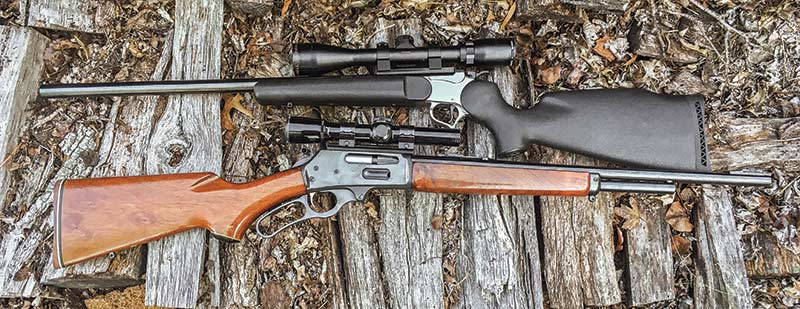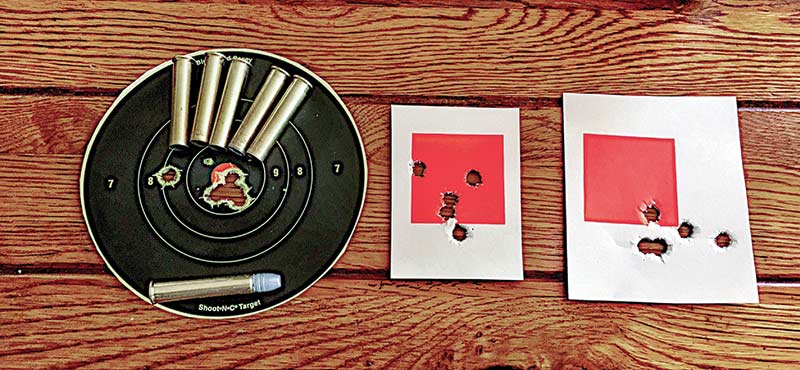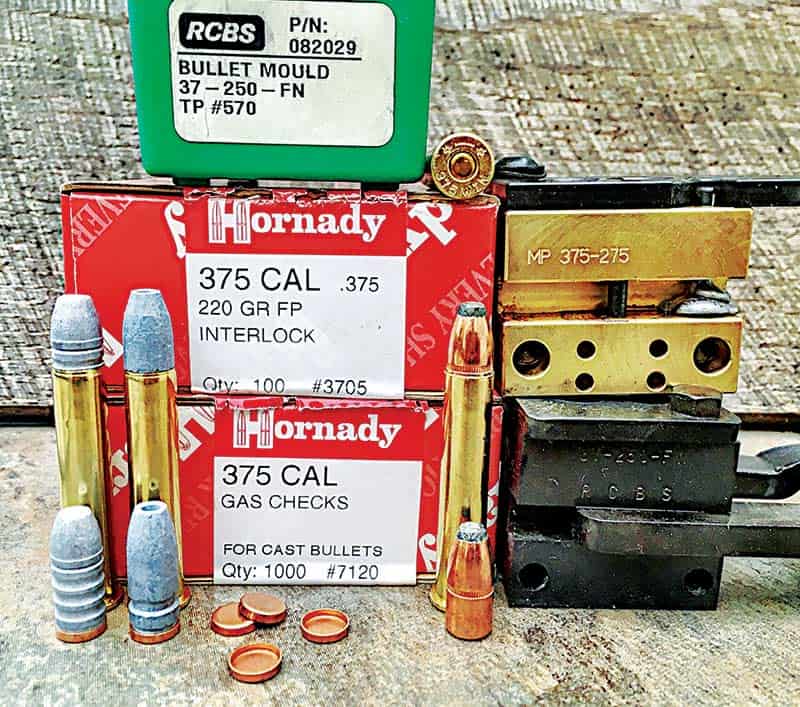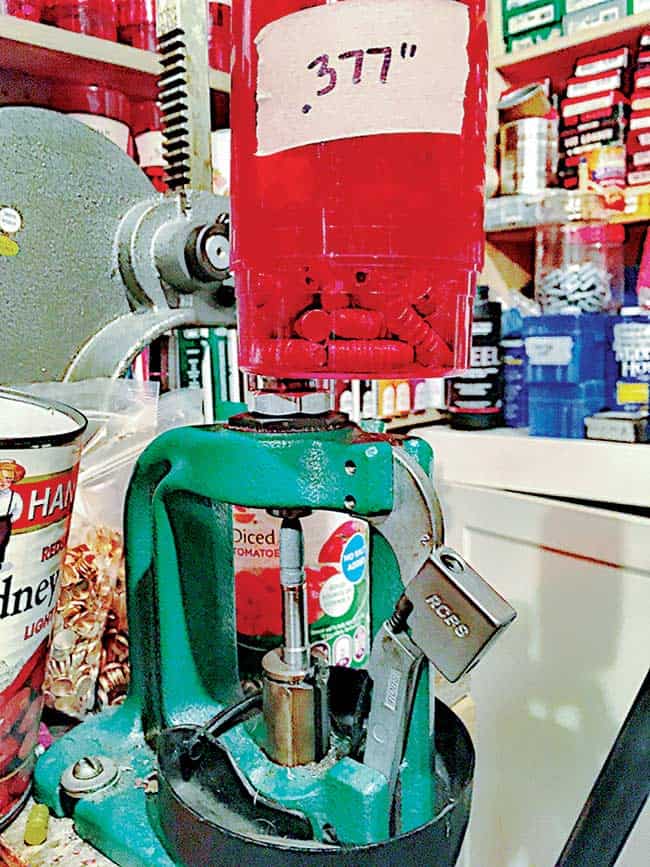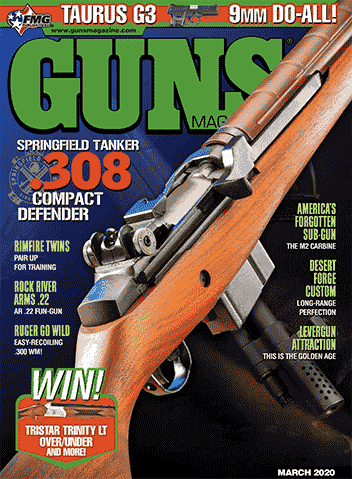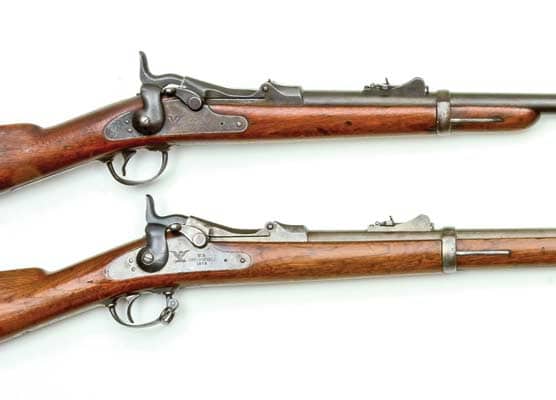The .375 Winchester
Modern power for levers and carbines
The .375 Winchester was introduced in 1978 and is a modernized version of the .38-55 Winchester from the 1880s. Wanting to breathe life into the popular Winchester 1894 lever-gun, Winchester released their “big bore” 1894s chambered in .375 Winchester. Although slightly shorter than the .38-55, the .375 Winchester operates at a much higher pressure, 52,000 CUP, making it a powerful, modern-day puncher.
Back Drop
I first heard about the .375 Winchester when dealing with a severe bout of “Marlinitis” back in the early 1990s. After obtaining several different models of Marlin lever-guns, my symptoms subsided. Marlin 336s chambered in .30-30 and .35 Remington were easily bailed out of the “used” rack for $200, a bargain even back then. The 1894s cost slightly more.
Later, I learned about the rare Marlin chambered in .356 Winchester, called the 356 ER. I stumbled across one at a gun show, where it was quickly lugged back to my vehicle and checked off my wish list.
Holy Grail Gun
Then there’s the model 375, chambered in — what else — the .375 Winchester. A straight-walled case like no other, it’s the start of the big-bore blasters. Looking like the undernourished brother of the .444 Marlin (and its big brother, the .45-70) the smaller-girth .375 Winchester packs a lot of punch without rattling your teeth like the .444 or .45-70.
Plus, straight-walled cases make for perfect cast-bullet shooters since you don’t have to worry about case-neck length when seating bullets. I had to get one and ended up with two, they’re so good!
Handloader’s Dream
In the early 1990s, getting factory brass was kind of iffy with Winchester’s limited runs, and factory fodder was expensive for my cheapskate tendencies. This was no big deal, as the parent cartridge of the .375 Winchester is the .30-30. All I needed to do was blow out the cases of readily available .30-30 brass — it’s a simple, fun and satisfying process for those who enjoy tinkering in handloading.
The Secret — Cream of Wheat
Load three grains of Bullseye powder into a primed .30-30 case and top it off with Cream of Wheat (COW). Simply push the cartridge neck into a block of paraffin wax (used for canning) and break it off, sealing the cartridge case.
Now shoot your loaded case to fireform your brass. You wouldn’t think COW has enough substance to blow out a brass case, but it does. You’ll end up with perfect cases every time.
Starline Brass
This year, Starline Brass breathed new life into the wonderful .375 Winchester by offering it as a regular-stocked item. Like many, I have moved onto other gun/cartridge interests but now seems like the perfect time to reacquaint myself with this straight-walled wonder.
The Bullets
My staple bullet for the .375 Winchester is the RCBS 37-250 FNGC (flat-nosed gas checked) bullet. My bullets drop out at 270 grains. Using a stiff charge of AA1680, I’m nudging 2,300 fps, with no signs of high-pressure and excellent accuracy in the 1.5″ to 2″ range at 100 yards.
New to the .375 caliber family is the MP-Molds 275-gr. gas-checked hollow-point, which also shoots great. Since I powder coat my cast bullets, I use LEE push-thru sizing dies to size and crimp the gas check onto my slugs.
Lastly is the old standby, Hornady’s 220-gr. jacketed flat-point. It hits hard and is good for up to elk-sized game.
No Powder Puff
I’ve found the best powder for the .375 Winchester to be AA1680. Alliant ReLoader 7 is also good, as is 2400. Lastly, Unique is wonderful for lighter plinking loads. The Internet is full of good loads as are the many handloading manuals available.
T/C Contender Carbine
Not long after my bout with “Marlinitis,” I came down with T/C Symptoms, short for Thompson Center Arms. It started with an innocuous looking .50 caliber Renegade muzzleloader and ended up with a slew of Contender and Encore frames and barrels, one of which is a blued .375 Winchester barrel, in carbine style, and boy is it a shooter!
This carbine killed three birds with one stone, as I have an affinity for single-shots, T/C carbines and lastly, the .375 Winchester. It is a handy-toting carbine packing plenty of punch. It is a true one-ragged hole shooter with my cast handloads and does wonderfully on deer. The ones I’ve shot don’t travel far.
If you’re lucky to find a Winchester or Marlin levergun chambered in .375 Winchester, don’t pass it up. Same goes for a T/C Contender barrel, trust me, you won’t be sorry.
